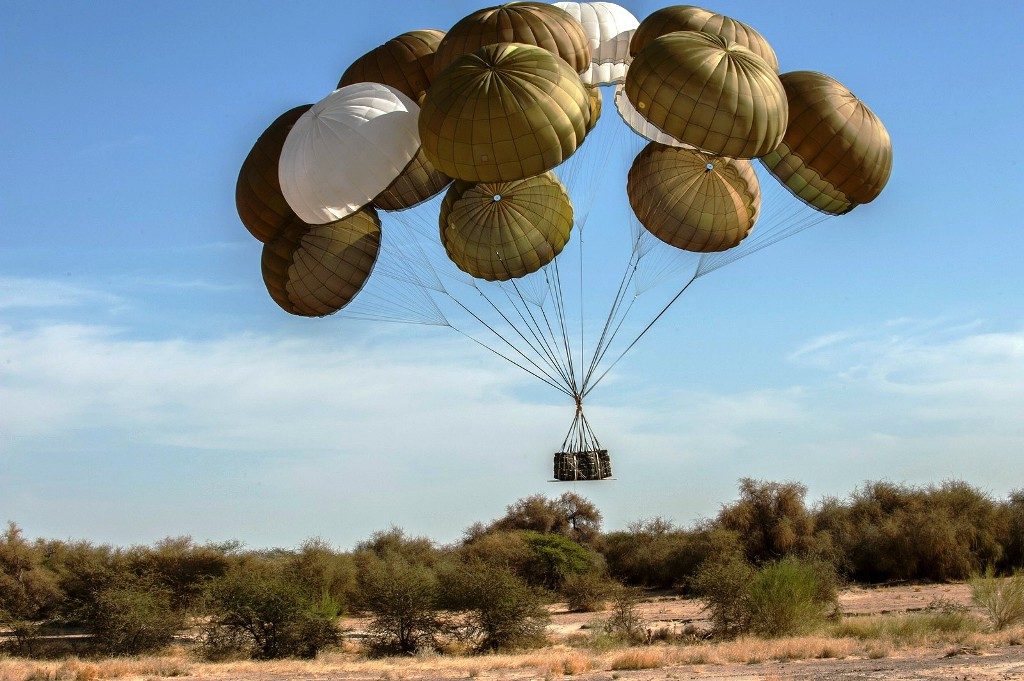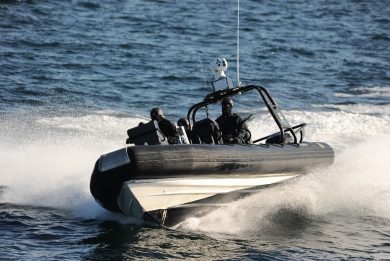
Safran close to delivering new high performance parachutes to French Forces
The Special Forces operator steers his square-canopy parachute towards the wind and aims at the landing spot looking through his NVGs, which show him the shape of the all-terrain vehicle that was dropped from the A400M immediately before the operational detachment jumper from the aircraft at high altitude and quite far from the actual LZ. A typical SF scenario, which involves different types of parachutes, all of them being part of Safran’s portfolio.
The French parachute manufacturing capability changed name many times in the past, and in February 2019 was acquired by Safran Electronics & Defense, a name that most people identify as night vision and navigation systems manufacturer, this having been its core business for years. Its parachute business offers all types of such systems, military parachutes for troops and cargo, aircraft parachute systems, parachutes for munitions and finally space parachutes.
The newest systems are part of the cargo parachute category, which in the past were designed by the R&D Office of the French MoD Délégation Générale de l’Armement (DGA), production being then carried out by the national parachute manufacturer which at that time was named Aérazur.
This is not anymore the case, and faced with the need of developing a wholly new family of cargo chutes to cope with A400M capabilities the DGA tasked Safran to design from scratch these parachutes. In November 2019 the company was awarded the LPA2 contract, LPA standing for Livraison Par Air, delivery by air, which includes the delivery of 200 side door release systems and 160 gravity release systems that can be used to drop loads between 320 kg and 4 metric tons, depending on configuration.
According to Safran, designing cargo parachutes takes into account many more interface problems with the aircraft compared to human parachutes, and due to the chutes dimensions, the biggest one has a diameter of over 30 meters, a failure might become fatal for the aircraft. One of the first key parameters was the French Forces decision to shift from a national solution for the launch platform to the standard US system for interoperability reasons. Based on that the company is developing the new suite, which includes the ejection system, pilot chutes and up to six G-12E main chutes. This is the latest version of the well known G-12 family of US design, which has a 19.5 meters nominal diameter, and although not new this parachute is not used by US forces in such big clusters, as they prefer using a smaller number of bigger parachutes. Safran engineering office is thus currently working on justifying the capability and safety of this new solution, and aims at qualifying its solution in the near future, the company looking with interest at the potential market, considering the number of nations that deploy the Airbus air transport aircraft. That said, Safran is also working on solutions based on extraction parachutes, which task is to pull the load out of the aircraft, for potential future programmes.

One system that has been abandoned by France some 15 years ago is LAPES (Low-Altitude Parachute-Extraction System), considered too risky, and not in use anymore by western countries.
A system which is becoming increasingly used is precision guided air delivery; based on a gliding chute and a navigation system linked to actuators, it allows delivering the load at considerable stand-off distance. Safran is in the final stage of development of a system that exploits the same gliding parachute used for personnel, with a 200 kg maximum load capacity and a maximum launch altitude of 30,000 ft, that will replace the in service G9, which could cope with a 160 kg load and a maximum altitude of 24,000 ft. Known as SMT C-OPS (Système de Mise a Terre des Chuteurs Opérationnels), the system is based on GPS and does not include a follow-me function. In perspective a new system allowing loads from 1 to 4 tonnes to be dropped and safely guided should be developed, still GPS-based, although consideration on potential opponents jamming capabilities is leading Safran to consider for the future high accuracy inertial guidance systems, one of the company specialties. Of course loads are dropped before the personnel, and their vertical speed is slightly higher in order to be sure that they are the first to hit the ground.
Coming to personnel, Special Forces are currently using gliding parachute with an aspect ratio around 3, which means the considering a safety margin jumping at 13,000 ft the operator can land some 10 km away from the jump location, while jumping at 24,000 ft, the limit of the gliding chute currently in use with French forces, the distance is over the double. Safran is finalising the qualification of the new French SF gliding parachute, the whole system being known as known as MMS 400 (Multi Mission System) while the wing itself is known as Phantom 400, the number showing the surface which is of 400 ft2. This is a further development of the MMS 360 or Phantom 360, which surface is 360 ft2, which already obtained an export order from Spain. According to Safran this new parachute has an aspect ratio between 4 and 5 and allows to jump at higher altitude, up to 29,500 ft, and if the operational detachment is able to fully exploit the jetstream keeping the main wind in its back it can land at some 80 km from the jumping point, making it extremely hard for the enemy to understand where the LZ can be. The Phantom 360 features 11 cells plus the stabiliser, the maximum payload being 210 kg, with a minimum payload of 80 kg and a deployment velocity of 175 knots, while the Phantom 400 has a maximum overall weight of 200 kg, due to the fact that it is certified at a higher altitude, which brings more stress to the canopy.
While in the past the DGA was carrying out autonomously all flight tests, the test phase has now been assigned to the manufacturer, thus Safran is now carrying out this activity in the United States, hiring a civilian C-130 Hercules and deploying its test team.
Photos courtesy Safran



